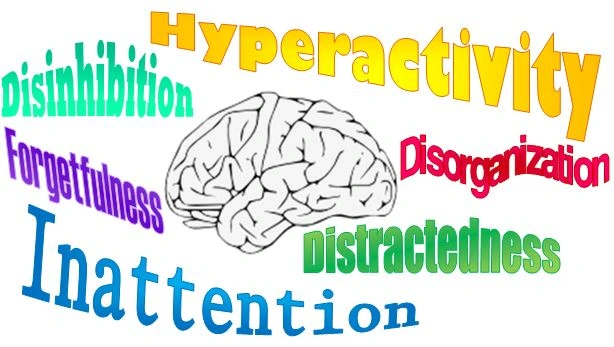Latest ADHD Breakthroughs: How Infant Temperament, Sleep Disord…

Key Takeaways
ADHD is a neurodevelopmental disorder that affects how a person behaves
Despite being poorly understood recent research has made significant strides in helping people understand this condition better
A better understanding of ADHD translates to better diagnosis and treatment by physicians which would result in better response rates
Like many mental health disorders, Attention Deficit Hyperactivity Disorder (commonly known as ADHD) is poorly understood. However, recent research has made several strides to help understand this condition even better. For instance, a recent study published in Development and Psychopathology has suggested a link between infant temperament, ADHD symptoms, and childhood maltreatment. Some of the findings of these studies will be considered in this article.
ADHD is a Neurodevelopmental Disorder
ADHD is a neurodevelopmental disorder that affects how a person behaves. The term “neurodevelopmental” points to the fact that this disorder affects the function and development of the nervous system (i.e. the brain and the spinal cord). Like many neurodevelopmental disorders, ADHD is most commonly first diagnosed in childhood. This is because its symptoms especially hyperactivity and impulsivity often become most noticeable in environments like schools where there is a high need for focused behavior. In these environments, these activities can be disruptive both for the child and the school system, bringing them into the spotlight.
ADHD Symptoms May be Explained By Infant Temperament and Childhood Maltreatment
Before now, various studies have identified the link between the temperament of children and stress from parents. This is usually evident when one considers a concept known as “negative emotionality.” Negative emotionality is explained as a personality trait characterized by the susceptibility to experience negative emotions frequently and more intensely. These negative emotions could include sadness, anxiety, or even anger.
In a longitudinal study by Golm & Brandt, (2023), the authors observed that children with high negative emotionality at 1 year had a higher chance of being maltreated by ages 5 and 9. In addition, they had higher odds of exhibiting severe forms of ADHD symptoms at age 5.
Adults with ADHD Report High Rates of Sleep Problems
Besides the typical symptoms of ADHD, certain problems have been reported among people with this condition. Previous studies have reported that children with ADHD tend to experience sleep disorders at an alarming rate. However, the prevalence of this condition in adults is not adequately explored. In a study published in the Journal of Attention Disorders, exploring the prevalence of sleep disorders among adults with ADHD, the authors observed that most (60% of) adults with ADHD report having some type of sleep disorder. The study observed that 31% reported having trouble sleeping and another 29% reported having a condition known as restless leg syndrome (Van et al., 2024).
Maladaptive Daydreaming in Children May Mask ADHD Symptoms
According to authors Kandeğer et al. in a recent study also published in the Journal of Attention Disorders on January 6th, although ADHD is a neurodevelopmental disorder as we have stated earlier, its diagnosis may be delayed into adulthood. They attributed this finding to a term known as “maladaptive daydreaming” (Kandeğer et al., 2025).
First off, everyone daydreams. Daydreaming is an act whereby you think about or even visualize pleasant things while you are awake instead of focusing on what is happening right in front of you. Now, when these acts become excessive such that the individual begins to feel compelled to do them, they are termed maladaptive. As a rule of thumb, like all mental health disorders, Maladaptive daydreaming negatively affects the individual’s ability to function properly and is unacceptable by society.
Because symptoms of maladaptive daydreaming including reduced impulsivity, activity, and disruptive behavior contrast the classic symptoms of ADHD, they may mask ADHD. As a result, a child with a combination of ADHD and maladaptive daydreaming may be said to experience relief from their ADHD symptoms but at the expense of functional impairments occurring from maladaptive daydreaming.
Novel Systems for ADHD Diagnosis
Traditionally, the diagnosis of ADHD relies largely on clinical tools including a review of the patient’s symptoms, past medical history, and other relevant history. Psychiatrists consider these with rating scales to assess whether the individual meets the criteria based on manuals like DSM-5. Recently, however, studies have been dedicated to improving this traditional method and even developing better methods for diagnosing ADHD.
Neuroscience and the Diagnosis of ADHD
As we have seen earlier, the diagnosis of ADHD relies on the symptoms the person presents with. Most of these symptoms are either behavioral or cognitive. However, new research has shown that beyond considering the individual at a surface level of symptoms, we could leverage neural pathways in their brains to diagnose ADHD.
The study observed that individuals with ADHD have divergent patterns in brain waves related to attention and self-control. The attention wave is known as the P3B wave while the N200 wave controls both self-control and attention (Palomeque, 2024).
The study also reported that since ADHD is a neurodevelopmental disorder, people with this condition tend to have an underdevelopment of some particular areas in their brains. These areas can be seen using techniques like Magnetic Resonance Imaging (MRI). For instance, MRI scans of people with ADHD show that the various cortical areas of their brains are underdeveloped (Palomeque, 2024).
Artificial Intelligence and the Diagnosis of ADHD
At this point, there is arguably no area of life that hasn’t been affected by artificial intelligence. A study by scientists in the United Kingdom has proven that AI could also be used to aid in the diagnosis of ADHD (Li et al., 2024). These scientists developed a machine-learning-based model that analyses videos of actions performed by individuals. Upon analyzing these videos, this model detects if that individual has ADHD or not. The study reported that this model was highly accurate with an accuracy of 95.5%. However, they also observed a bias with the system being able to detect ADHD in males than in females (Li et al., 2024).
Improving ADHD Treatment with Non-Pharmacological Options
Various efforts have been made especially in recent times to uncover better ways to treat ADHD without the use of drugs.
Massage Therapy May Ameliorate Symptoms
One of these methods involves the use of massage therapy in alleviating the symptoms of ADHD. This method is effective in improving ADHD symptoms among adolescents according to a study published in Complementary Therapies in Clinical Practice (Anna-Carin Robertz et al., 2024).
The study involved ten weekly sessions of tactile massage with each session lasting about one hour. These massages were conducted by certified massage therapists. The researchers noted that the adolescents reported improvements in their symptoms following the massage therapy. This was particularly evident by the sixth session and was verified by the participant’s parents.
In addition, the participants also reported improved sleep following the massage therapy.
30 Minutes of Aerobic Exercise Improves Cognition in People with ADHD
In contrast to the previous finding that reported treatment options capable of improving ADHD symptoms on a general scale, scientists at the Department of Psychiatry at the National Taiwan University Hospital observed that individuals who exercise report better cognition than those who do not. The authors attributed this finding to a phenomenon known as “short intracortical inhibition.” Short intracortical inhibition refers to the fact that certain activities you perform tend to temporarily suppress the part of your brain that is involved in motor activities (Kuo et al., 2024).
While observing a total of 52 adults (26 healthy and 26 with ADHD) the researchers observed that, unlike healthy individuals who experienced a decrease in short intracortical inhibition, people with ADHD tend to experience an improvement in this inhibition. They observed that individuals who showed these changes also reported improvements in motor learning (Kuo et al., 2024).
What Do These Findings Mean?
The findings from these studies point to the efforts of researchers to better understand ADHD and by extension, mental health disorders. By understanding this condition, physicians can make more informed decisions regarding diagnosis and the type of care to be offered to individuals with ADHD. For people with ADHD, it translates to hope that a condition that was once a mystery will soon become demystified.
Related Reading:
FAQs
Does ADHD share any genetic similarities with other conditions?
Yes, various studies have shown genetic factors between ADHD and other conditions. These include mental health conditions like depression and anxiety. Beyond mental health conditions, however, a recent study published in Molecular Psychiatry has uncovered that dyslexia and ADHD may be genetically related (Austeja Ciulkinyte et al., 2024).
Are there other non-pharmacological treatment options that have been explored for ADHD?
Besides massage therapy and aerobic exercise, neuroscience is another treatment option that has received significant attention in recent times. Neurofeedback is a technique that involves the use of a brain-computer interface to train individuals with ADHD on how to regulate their brain activity in real time. An electroencephalogram (EEG) is often used for this purpose. Before now, the effectiveness of neurofeedback in the treatment of ADHD has been controversial, however, a recent study has shown that although neurofeedback did not significantly improve core ADHD symptoms including inattention and hyperactivity, participants who underwent this therapy showed promising results in the area of processing speed (Westwood et al., 2024).
References
Anna-Carin Robertz, Carl-Johan Törnhage, Nilsson, S., Nyman, V., & Kantzer, A.-K. (2024). Positive effects of tactile massage for adolescents with Attention Deficit/Hyperactivity Disorder (ADHD) – a small scale study. Complementary Therapies in Clinical Practice, 57, 101909–101909. https://doi.org/10.1016/j.ctcp.2024.101909
Austeja Ciulkinyte, Mountford, H. S., Fontanillas, P., Bates, T. C., Martin, N. G., Fisher, S. E., & Luciano, M. (2024). Genetic neurodevelopmental clustering and dyslexia. Molecular Psychiatry. https://doi.org/10.1038/s41380-024-02649-8
Golm, D., & Brandt, V. (2023). The longitudinal association between infant negative emotionality, childhood maltreatment, and ADHD symptoms: A secondary analysis of data from the Fragile Families and Child Wellbeing Study. Development and Psychopathology, 1–8. https://doi.org/10.1017/S0954579423000457
Kandeğer, A., Hasan Ali Güler, Münise Seda Özaltın, Ömer Bayırlı, Hacer Söylemez, Elif Yıldız, & Bengi Semerci. (2025). Could Maladaptive Daydreaming Delay ADHD Diagnosis Until Adulthood? Clinical Characteristics of Adults With ADHD Based on Diagnosis Age. Journal of Attention Disorders, 29(5), 387–396. https://pubmed.ncbi.nlm.nih.gov/39758016/
Kuo, H.-I., Nitsche, M. A., Wu, Y.-T., Chang, J.-C., & Yang, L.-K. (2024). Acute aerobic exercise modulates cognition and cortical excitability in adults with attention-deficit hyperactivity disorder (ADHD) and healthy controls. Psychiatry Research, 340, 116108–116108. https://doi.org/10.1016/j.psychres.2024.116108
Li, Y., Nair, R., & Naqvi, S. M. (2024). ADHD detection based on human action recognition. Neuroscience Applied, 3, 104093. https://doi.org/10.1016/j.nsa.2024.104093
Palomeque, T. R. (2024, December 11). ADHD can be diagnosed by looking at brainwaves – here’s the neuroscience behind it. The Conversation. https://theconversation.com/adhd-can-be-diagnosed-by-looking-at-brainwaves-heres-the-neuroscience-behind-it-245686
van, Bijlenga, D., Mylène Böhmer, Beekman, F., & Kooij, S. (2024). Sleep Problems in Adults With ADHD: Prevalences and Their Relationship With Psychiatric Comorbidity. Journal of Attention Disorders. https://doi.org/10.1177/10870547241284477
Westwood, S. J., Aggensteiner, P.-M., Kaiser, A., Nagy, P., Donno, F., Merkl, D., Balia, C., Goujon, A., Bousquet, E., Capodiferro, A. M., Derks, L., Purper-Ouakil, D., Carucci, S., Holtmann, M., Brandeis, D., Cortese, S., Sonuga-Barke, E. J. S., & European ADHD Guidelines Group (EAGG). (2024). Neurofeedback for Attention-Deficit/Hyperactivity Disorder: A Systematic Review and Meta-Analysis. JAMA Psychiatry, 10.1001/jamapsychiatry.2024.3702. https://doi.org/10.1001/jamapsychiatry.2024.3702
FEEDBACK:
Like this project
Posted Mar 23, 2025
Like most mental health disorders, ADHD remains poorly understood. However, recent studies have made certain groundbreaking discoveries that could improve ADHD…
Likes
0
Views
2
Timeline
Sep 5, 2024 - Mar 23, 2025




